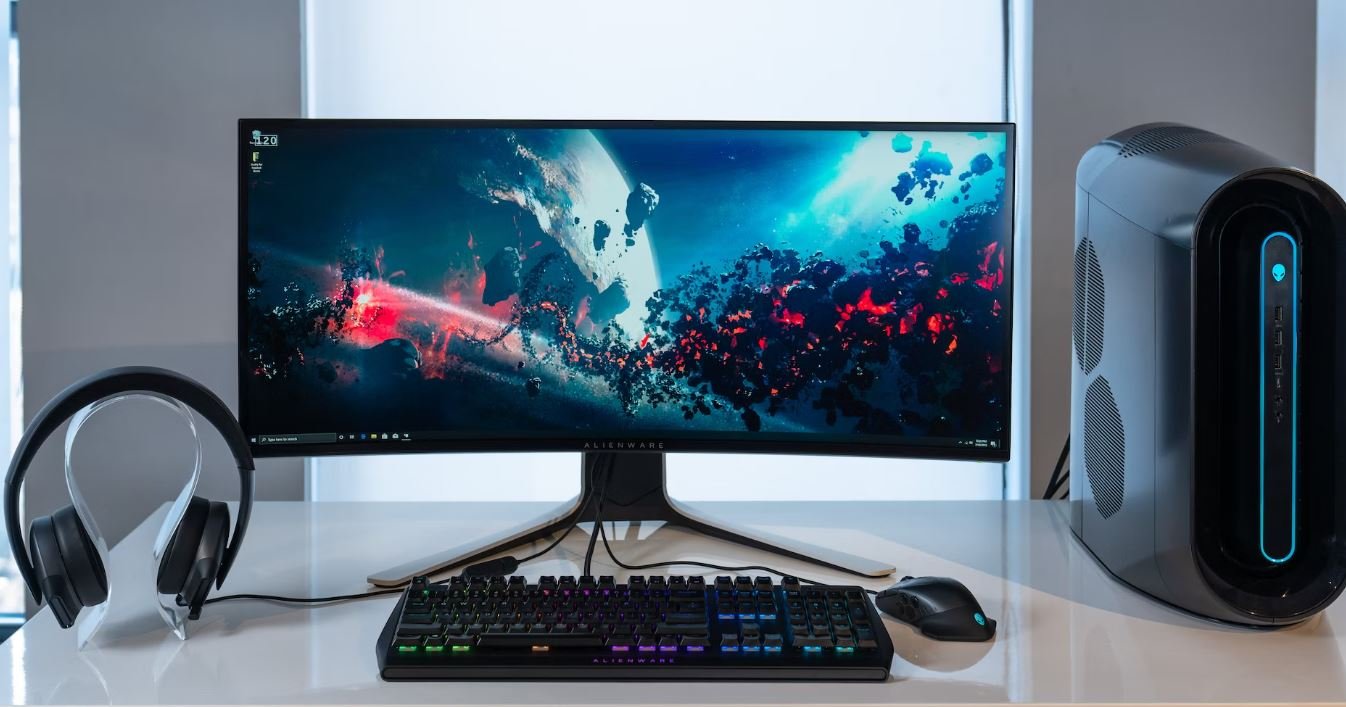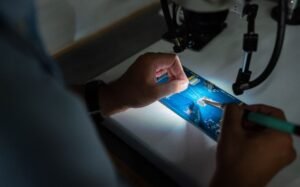How Can You Tell a Deepfake?
Deepfakes, hyper-realistic AI-generated videos, have gained attention in recent years due to their potential to deceive viewers. It’s becoming increasingly important to be able to differentiate between real and fake videos to avoid spreading misinformation or falling victim to fraudulent content. In this article, we will explore ways to identify deepfakes and protect yourself from their potential harm.
Key Takeaways:
- Deepfakes are AI-generated videos that fake the appearance or voice of a person.
- Technology advancements have made deepfakes indistinguishable from real videos.
- There are several indicators that can help you identify a deepfake, such as unnatural facial movements or inconsistencies in the background.
- It’s important to fact-check and verify the source before sharing any video content.
1. Visual Anomalies
One way to spot a deepfake is by analyzing the video for visual anomalies. Pay attention to unnatural facial movements, such as lack of blinking, odd eye reflections, or glitch-like distortions. These inconsistencies can be indicative of a deepfake. *Deepfake technology has come a long way, but it still struggles to perfectly replicate natural human behavior.*
**Interestingly, deepfake generators often focus on the face, resulting in less attention to other details like hair or body movements.** Therefore, if you notice discrepancies between the face and other aspects of the video, it could be a sign of manipulation.
2. Audio Inconsistencies
Deepfake videos can also manipulate audio, making it crucial to analyze the audio content for inconsistencies. Pay attention to *repeated or unnatural sonic patterns* that don’t align with the speaker’s voice or tone. Low-quality audio or syncing issues may also indicate a deepfake. Using voice recognition software and comparing it to known samples of the person’s voice can help verify the authenticity of the audio.
3. Background Clues
The background of a video can provide important clues about its authenticity. Look for *inconsistencies or anomalies* in the background elements or changes that don’t make sense. Deepfake creators may struggle to match the person’s head movements accurately leading to unnatural shifts in the background. In addition, check for any warping, blurring, or distortions that could indicate manipulation.
- Pay attention to shadows and lighting conditions in the video to evaluate their consistency.
- Look for reflections or objects that appear distorted or misplaced.
Tables and Data Points
| Deepfake Detection Tools | Accuracy |
|---|---|
| Deeptrace | 92% |
| Google’s Deepfake Detection Challenge | 82% |
| Microsoft’s Video Authenticator | 96% |
4. Fact-Checking and Verification
Before sharing any video content, it’s essential to engage in fact-checking and verification processes. Research the source of the video and ascertain its credibility. Seek multiple reputable sources to cross-validate the information provided in the video. Remember, spreading misinformation can have significant consequences and can harm individuals or organizations.
5. Constant Technological Advancements
It is important to keep in mind that *as deepfake technology advances*, so do the methods to detect and counter it. Stay up to date with the latest tools and techniques to stay ahead of potential deepfake threats. Researchers are continually working to develop improved detection systems to combat the spread of deepfakes.
Conclusion
With the rise of deepfake technology, it is crucial to be vigilant and aware of the potential for deceptive AI-generated videos. By analyzing visual anomalies, audio inconsistencies, and background clues, as well as engaging in fact-checking and verification, we can be better equipped to identify deepfakes. Remember to stay informed about the latest advancements in deepfake detection to protect yourself from falling victim to manipulation.

Common Misconceptions
Deepfakes seem obvious and easily detectable
One common misconception about deepfakes is that they are easy to spot. In reality, deepfakes can be highly convincing and difficult to detect with the naked eye.
- Deepfakes can utilize advanced artificial intelligence algorithms to create highly realistic videos.
- Visual imperfections that were once telltale signs of a fake video can now be effectively eliminated through advanced editing techniques.
- Evidence includes numerous instances where deepfakes were considered authentic and viewed by millions before being debunked.
Deepfakes are only used for creating fake celebrity videos
Another misconception is that deepfakes are solely utilized to create fake videos of celebrities. While there have been high-profile cases involving deepfake celebrity pornographic videos, deepfakes can be used for various other malicious purposes.
- Deepfakes can be used to create misinformation or propaganda by altering videos of public figures or politicians.
- Individuals can be targeted by using deepfake technology to create videos showing them in compromising or illegal situations.
- Deepfakes can also be utilized in scams, such as creating videos of someone impersonating a relative or friend in need of financial assistance.
Only computer experts can detect deepfakes
Many people believe that only computer experts have the ability to detect deepfakes, but this is not entirely true. While it is true that some deepfakes can be incredibly convincing, there are certain signs that can be picked up by anyone with a little knowledge about the subject.
- Unnatural eye movements or lack of blinking in a video subject can be indicative of a deepfake.
- Artifacts or blurriness around the subject’s face, especially near the boundaries, can be signs of tampering.
- Inconsistencies in the lighting or shadows within the video can also suggest that it may be a deepfake.
Deepfakes are always harmful or malicious
While deepfakes have garnered a reputation for being harmful and malicious, not all uses of deepfake technology are intending to deceive or harm others.
- Deepfakes have been used in the entertainment industry to recreate deceased actors or performers in films.
- Deepfakes can also be utilized in art or satire to create thought-provoking or humorous content.
- Some researchers are exploring the potential positive applications of deepfakes, such as in medical simulations or virtual reality experiences.
There is no effective way to combat deepfakes
While deepfakes present a significant challenge, there are ongoing efforts to combat their spread and minimize their impact.
- Various research institutes and technology companies are developing advanced deepfake detection algorithms.
- Platforms such as social media sites and video hosting services are implementing policies and guidelines to address deepfake content.
- Education and awareness campaigns are being conducted to help people recognize and critically evaluate the authenticity of videos.

Table: How Deepfakes are Produced
Deepfakes are produced using artificial intelligence technologies that manipulate or generate realistic audio, video, and other media. This table illustrates the general steps involved in creating a deepfake:
| Steps | Details |
|---|---|
| 1. Data Collection | Gather large datasets of images and videos of the target individual |
| 2. Training AI Model | Feed the collected data into a deep learning algorithm to train the model |
| 3. Face Mapping | Analyze the target individual’s facial features and expressions |
| 4. Data Augmentation | Generate variations of the target individual’s face to train the algorithm |
| 5. Neural Network Architecture | Create a neural network architecture for generating deepfake content |
| 6. Face Swapping | Replace the original face in a video with the target individual’s face |
| 7. Fine-Tuning | Refine the deepfake by iteratively adjusting the generated content |
| 8. Post-Processing | Apply filters, effects, and modifications to enhance realism |
| 9. Distribution | Share the deepfake through various platforms or social media |
Table: Distinguishing Features of Deepfakes
Deepfakes have certain traits that can help identify them. Here are some distinguishing features to be aware of:
| Feature | Description |
|---|---|
| Unnatural Movements | Awkward or unnatural movements may occur due to incomplete data mapping |
| Blurry or Distorted Edges | Deepfakes can exhibit blurriness or distortion around the face, especially in fast movements |
| Inconsistent Lighting | Deepfakes can have lighting inconsistencies as the source and target videos may differ in lighting conditions |
| Uncanny Valley | Deepfakes may produce an eerie or unsettling feeling due to imperfect replication of natural human features |
| Glitching or Artifacts | Visual glitches or artifacts may appear as a result of the deepfake generation process |
| Lack of Eye Reflection | Deepfakes often lack reflection of light sources on the eyes |
| Inappropriate Shadows | Deepfakes may have incorrect or inappropriate shading or shadows on the face |
| Mismatched Skin Tone | The skin tone of the face may not match the rest of the body or exhibit unnatural color variations |
Table: Potential Uses and Implications of Deepfakes
Deepfakes have diverse applications and impact various areas. This table provides an overview of potential uses and implications:
| Uses | Implications |
|---|---|
| Entertainment Industry | Enhanced cinematic experiences and creative possibilities |
| Education and Training | Safer and more realistic simulations for training purposes |
| Political Manipulation | Potential to spread misinformation, influence elections, or create public distrust |
| Revenge Porn | Can be used maliciously for non-consensual distribution of explicit content |
| Fraud and Scams | Deepfakes could be used to deceive individuals or organizations for financial gain |
| Historical Reenactments | Bringing historical figures to life in an immersive way |
| Jokes and Parodies | Creative and humorous use in various media |
| Identity Theft | Potentially exploiting someone’s identity for fraudulent purposes |
Table: Detecting Deepfakes
Efforts are ongoing to develop methods to detect deepfakes accurately. This table highlights commonly used techniques:
| Technique | Description |
|---|---|
| Facial Landmarks Analysis | Examining facial landmarks for inconsistencies or abnormal movements |
| Analysis of Eye Blinking Patterns | Identifying irregularities or lack of natural blinking in the deepfake |
| Microexpressions Analysis | Assessing tiny involuntary facial movements that are not easily replicated |
| Audio-Visual Synchronization | Evaluating synchronization between audio and visual elements in the video |
| Texture Inconsistency Detection | Identifying unnatural texture patterns or inconsistencies |
| Deep Neural Networks | Utilizing AI models to differentiate between original and fake content |
| Metadata Analysis | Examining metadata and digital footprints for signs of manipulation |
| Source Verification | Investigating the authenticity and credibility of the video source |
Table: Historical Examples of Deepfakes
Deepfakes have gained attention in recent years due to notable instances. This table presents some historical examples:
| Example | Description |
|---|---|
| Obama Fake Speech | A deepfake video showed former President Obama delivering a false speech |
| Mark Zuckerberg | A deepfake of Facebook CEO Mark Zuckerberg emerged, promoting false statements |
| Salvador Dalí | A deepfake brought Salvador Dalí back to life for an exhibition |
| Tom Cruise Impersonation | A deepfake video impersonated Tom Cruise with remarkable accuracy |
| Manipulated Pornography | Deepfake technology has been exploited to create non-consensual explicit content with celebrities |
| Presentation Mishap | A deepfake issue occurred during a university lecture, causing misinformation and confusion |
Table: Legal and Ethical Considerations
The rise of deepfakes raises various legal and ethical concerns. This table summarizes some important considerations:
| Consideration | Discussion |
|---|---|
| Privacy Rights | Deepfakes can violate an individual’s privacy and consent by using their likeness without permission |
| Defamation | Deepfakes can be used to defame individuals or damage their reputation |
| Intellectual Property | Deepfakes may infringe upon copyright or trademark rights of individuals or organizations |
| Cyberbullying | Deepfakes can facilitate malicious intent, leading to cyberbullying or harassment |
| Consent and Authenticity | The consent and authenticity of content featuring real individuals can be questioned |
| Legal Liability | Issues of legal liability arise when deepfakes are used for malicious purposes |
Table: Combatting Deepfake Propagation
To combat the growing threat of deepfakes, different strategies are being developed. This table highlights key approaches:
| Approach | Description |
|---|---|
| Technological Solutions | Developing advanced detection and authentication algorithms |
| Regulatory Measures | Implementing laws or regulations addressing the creation and dissemination of deepfakes |
| Media Literacy | Boosting education and awareness about deepfakes to enhance critical thinking skills |
| Collaboration and Partnerships | Joining forces between tech companies, governments, and researchers to develop collective solutions |
| Blockchain Technology | Exploring the use of blockchain to verify the authenticity of media content |
| Watermarking and Metadata | Embedding watermarks or robust metadata for traceability and verification |
| Forensic Analysis | Utilizing forensic techniques to analyze and authenticate digital content |
Table: Deepfake Awareness Tips
Being aware of deepfake risks is crucial. This table offers tips to help individuals identify and protect against deepfakes:
| Tips | Description |
|---|---|
| Verify Sources | Check the credibility and authenticity of the content’s sources before believing or sharing |
| Look for Inconsistencies | Identify any discrepancies in facial movements, voice, or visual elements that may indicate a deepfake |
| Stay Informed | Keep up to date with the latest developments in deepfake technologies and detection methods |
| Be Skeptical | Exercise critical thinking and approach content with a healthy level of skepticism |
| Report Suspected Deepfakes | If you encounter a potential deepfake, report it to the appropriate platform or authorities |
| Promote Media Literacy | Advocate for media literacy education and awareness to empower individuals against manipulation |
Deepfakes pose significant challenges to our society, blurring the line between reality and fabrication. With the ability to create convincing but entirely fake content, they have the potential to disrupt numerous domains. Detecting and combating deepfakes require a multi-faceted approach involving technological advancements, legal frameworks, education, and individual awareness. By remaining vigilant and informed, we can navigate this evolving landscape and limit the negative impact of deepfakes on our lives.
Frequently Asked Questions
What is a Deepfake?
A Deepfake refers to a manipulated or synthesized piece of media content, such as videos, images, or audio, in which the original source has been altered or replaced using artificial intelligence techniques like deep learning.
How are Deepfakes created?
Deepfakes are typically created by training a neural network model on a large dataset of real images or videos. The model learns to identify patterns and features in the dataset, allowing it to generate new content that resembles the original but with altered elements.
What are some common signs of a Deepfake?
Some signs that can indicate a Deepfake include unnatural facial movements, mismatched or distorted features, inconsistent lighting or shadows, unusual background artifacts, and abnormal audio cues. However, it is important to note that Deepfake technology is constantly evolving, and these signs may vary.
What types of media can be manipulated with Deepfakes?
Deepfake technology can be used to manipulate various types of media, including videos, images, and audio recordings. It is commonly associated with face swapping in videos or inserting fake individuals into images, but it can also be used for voice manipulation or generating entirely fictional content.
Are Deepfakes illegal?
While the creation and distribution of Deepfakes itself is not illegal in many countries, using Deepfakes for malicious purposes, such as spreading false information, defaming someone, or committing fraud, can be illegal and subject to legal consequences.
How can I detect a Deepfake?
Detecting Deepfakes can be challenging, but some methods include analyzing facial inconsistencies, examining eye reflections for abnormal reflections, checking for unusual artifacts or glitches, verifying the source and context of the content, and consulting with experts or specialized software designed for Deepfake detection.
Is there a foolproof method to identify Deepfakes?
No, there is no foolproof method to identify Deepfakes. As Deepfake technology improves, it becomes increasingly difficult to detect manipulated content with the naked eye. However, researchers and developers are working on advanced algorithms and tools to enhance Deepfake detection capabilities.
How can I protect myself from falling victim to Deepfakes?
To protect yourself from falling victim to Deepfakes, it is advisable to be cautious when consuming online media, especially from unverified or suspicious sources. Utilize fact-checking techniques, cross-reference information, be aware of the signs of Deepfakes, and stay informed about emerging Deepfake detection techniques.
How can Deepfake technology be used for positive purposes?
While Deepfakes often have negative connotations, this technology can also be used positively. For example, it can be employed in the entertainment industry for special effects, digital restoration of historical footage, or dubbing in foreign languages. Additionally, it can aid in research, medicine, and education by simulating scenarios and improving simulations.
What actions are being taken to combat Deepfakes?
Various initiatives and organizations are working to combat the harmful effects of Deepfakes. These include developing advanced detection tools and techniques, raising awareness about the existence and risks of Deepfakes, and collaborating with social media platforms, technology companies, and legal authorities to establish policies and regulations to mitigate their negative impacts.




